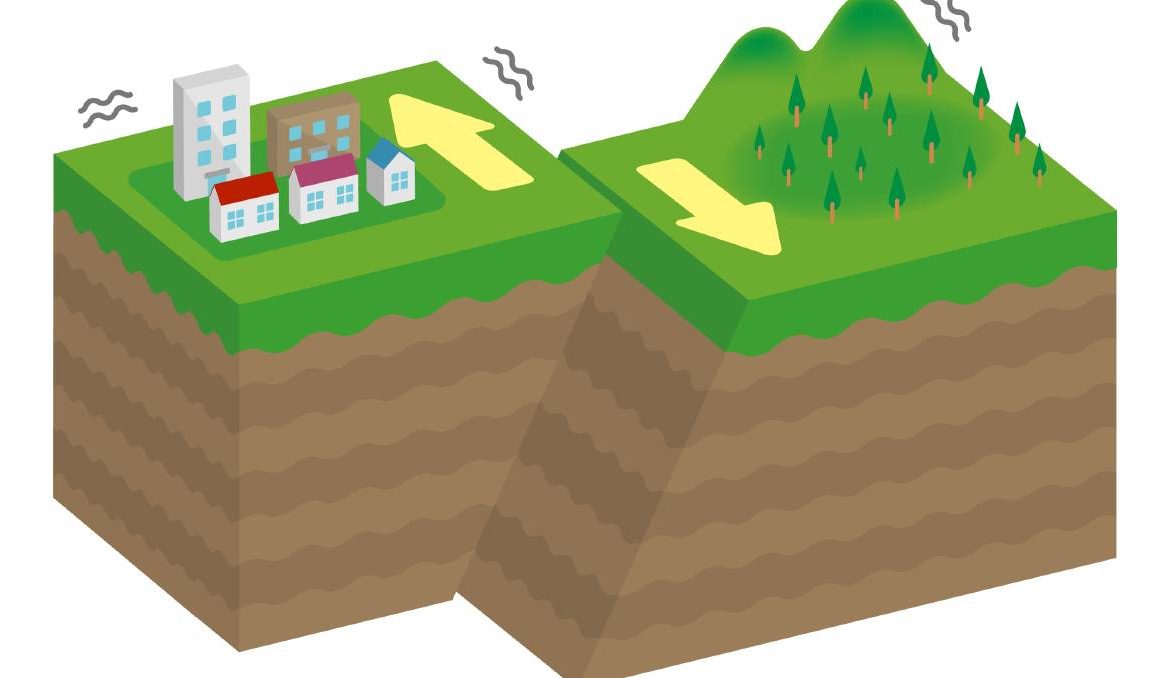news, latest-news,
When tectonic forces accumulate across a fault line, it can rupture, causing an earthquake. The energy released in seismic waves threatens structures such as buildings, bridges, pipelines and earth dams. In addition to ground shaking, damage is caused by surface rupture that affects large areas of land. A strike-slip fault occurs when the blocks slide parallel to the fracture line, causing cracks through anything that gets in the way. Although current seismic codes restrict construction in the vicinity of active tectonic faults, finding the exact location of fault outcrop is often difficult. While the effects of earthquakes on structures are well studied, the impact of fault ruptures on buildings has gained limited attention due to its complexity. PhD candidate Habib Rasouli and I at the University of Technology Sydney (UTS) have found a solution that can protect buildings subjected to the large ground deformations caused by a strike-slip fault rupture. Conventional deep foundations in buildings are at risk in a strike-slip fault rupture due to the high level of shear forces in the foundation slab and large deformation and bending in the piles. Our newly proposed system uses composite inexpensive geotextiles made from polypropylene or polyethylene. Foundation piles are disconnected from the building with a layer of soil, reinforced with layers of geotextiles. Large sheets of geotextiles can be easily transported to construction sites. They are embedded in compacted sand and gravel that isolate and reduce the impact of large ground deformations due to fault rupture. We developed this solution using an advanced three-dimensional computer model that allows us to compare its performance with conventional connected pile construction. This indicates that we have found an inexpensive and effective way to protect buildings. With a growing world population, the need to build safe and affordable infrastructure is also growing. Now we are looking at extending the solution to protect structures affected by ground subsidence caused by mining and tunnelling activities. The Fuzzy Logic Science Show is 11am Sundays on 2xx 98.3FM. Send your questions to [email protected] Twitter @FuzzyLogicSci Podcast FuzzyLogicOn2xx.Podbean.com
/images/transform/v1/crop/frm/Z4Q6sUEHdcmw72MBPYgZkU/ada92ba1-f6d9-478f-b7c5-0557e4605237.jpg/r0_287_2747_1839_w1200_h678_fmax.jpg
A strike-slip fault occurs when the blocks slide parallel to the fracture line, causing cracks through anything that gets in the way. Picture: Shutterstock
When tectonic forces accumulate across a fault line, it can rupture, causing an earthquake. The energy released in seismic waves threatens structures such as buildings, bridges, pipelines and earth dams.
In addition to ground shaking, damage is caused by surface rupture that affects large areas of land. A strike-slip fault occurs when the blocks slide parallel to the fracture line, causing cracks through anything that gets in the way.
Although current seismic codes restrict construction in the vicinity of active tectonic faults, finding the exact location of fault outcrop is often difficult.
While the effects of earthquakes on structures are well studied, the impact of fault ruptures on buildings has gained limited attention due to its complexity.
PhD candidate Habib Rasouli and I at the University of Technology Sydney (UTS) have found a solution that can protect buildings subjected to the large ground deformations caused by a strike-slip fault rupture.
Conventional deep foundations in buildings are at risk in a strike-slip fault rupture due to the high level of shear forces in the foundation slab and large deformation and bending in the piles.
Our newly proposed system uses composite inexpensive geotextiles made from polypropylene or polyethylene. Foundation piles are disconnected from the building with a layer of soil, reinforced with layers of geotextiles.
Large sheets of geotextiles can be easily transported to construction sites. They are embedded in compacted sand and gravel that isolate and reduce the impact of large ground deformations due to fault rupture.
We developed this solution using an advanced three-dimensional computer model that allows us to compare its performance with conventional connected pile construction. This indicates that we have found an inexpensive and effective way to protect buildings.
With a growing world population, the need to build safe and affordable infrastructure is also growing.
Now we are looking at extending the solution to protect structures affected by ground subsidence caused by mining and tunnelling activities.
The Fuzzy Logic Science Show is 11am Sundays on 2xx 98.3FM.
Send your questions to [email protected] Twitter @FuzzyLogicSci Podcast FuzzyLogicOn2xx.Podbean.com







